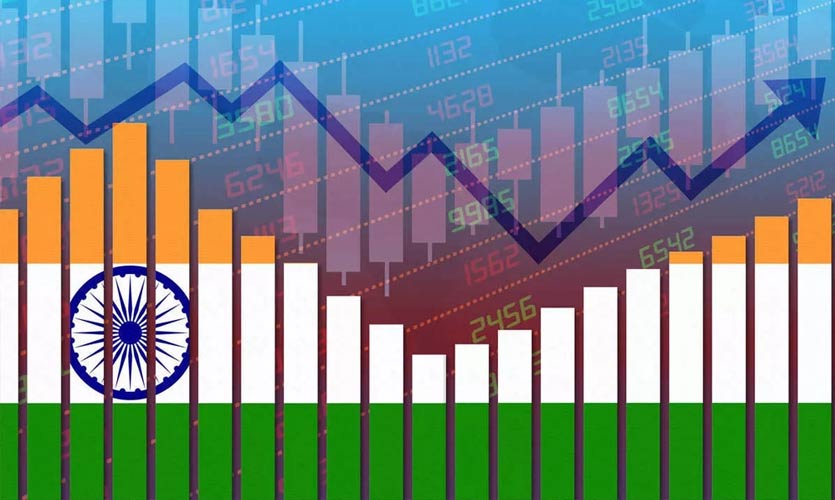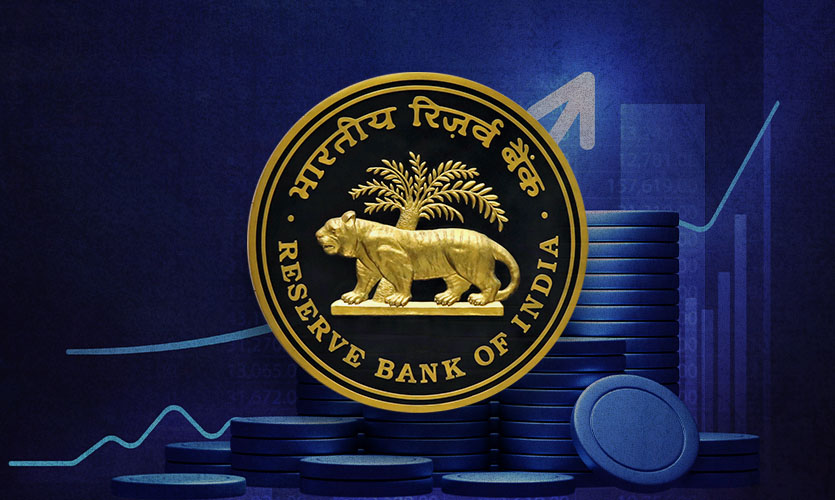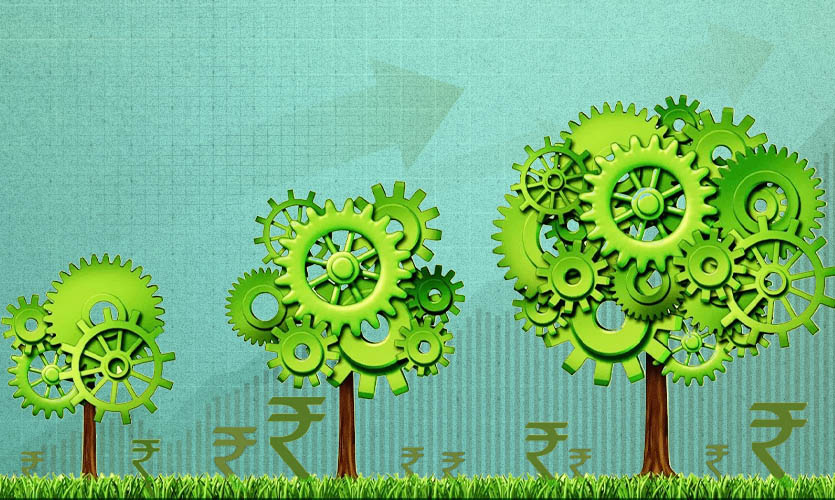The much-awaited pre-budget Economic Survey was tabled in the Parliament on January 31, a day before the Union Budget 2022-23 is to be presented on February 1. After the President’s address to both Houses of the Parliament, the finance ministry released the two volumes of the 2021-22 survey. The first looks at overall macroeconomic and sectoral developments, and the second is a revamped statistical appendix. The highly anticipated survey states that the Indian economy will grow by 8-8.5 percent from April 2022 to March 2023, compared to the 9.2 percent gross domestic product (GDP) expansion projected by the National Statistical Office (NSO) at the beginning of the month. Favourable predictions have been made, with the economy on the path to fast recovery post the coronavirus-inflicted devastation. The previous economic survey was presented right before the catastrophic second wave of the COVID-19 pandemic.
However, caution still needs to be maintained due to rising oil prices, inflation and interest rates in the US that could impact India. As per the survey tabled in the Parliament today, “This projection is based on the assumption that there will be no further debilitating pandemic related economic disruption, monsoon will be normal, withdrawal of global liquidity by major central banks will be broadly orderly, oil prices will be in the range of $70-$75 per barrel, and global supply chain disruptions will steadily ease over the course of the year.”
The ongoing wave of the Omicron variant of coronavirus, and the Delta variant last year, could be the reason behind the projected 8-8.5 percent for 2022-23, which is two points lower than the 11 percent growth forecast in the 2021-22 survey. The International Monetary Fund (IMF) had projected India’s GDP to be 9 percent in 2022-23, and 7.1 percent in 2024.
The Economic Survey reviews the economic development in India over the past financial year. It provides a detailed analysis and statistical data on the performance of all the sectors like industrial, agricultural, industrial production, employment, prices, exports, education, and so on. The survey aids in providing a clearer understanding of the Union Budget by focusing on where the country’s priority is for the next financial year and what sectors would need more emphasis.
Last week, Venkatraman Anantha Nageswaran was appointed as the new Chief Economic Advisor (CEA) by the government, replacing Krishnamurthy Subramanian, who returned to academia in December 2021 after his three-year tenure as CEA ended. For successive CEAs, the Economic Survey is often used as a background to suggest policy changes, however, the government isn’t obliged to follow these recommendations and this serves the purpose of policy aid.
Key Takeaways
Apart from the projected economic growth for 2022-23, the survey gives a predominantly optimistic outlook on the economy with India ready to take on challenges in the coming financial year. The main support of the economy has been the increase in COVID vaccine coverage, the gains made from the supply-side reforms and ease in regulations. This approach favoured India rather than taking a demand management approach.
Adoption of agile policy responses instead of the introduction of front-load stimulus packages, helped India better in overcoming the devastation caused by the pandemic, compared to most countries. The survey further states that India has achieved robust export growth and availability of fiscal space to increase capital spending to support the growth in the next fiscal.
The survey was first-authored by Principal Economic Adviser (PEA) Sanjeev Sanyal and the team at the finance ministry, in the absence of a full-time chief economic adviser (CEA). Sanyal noted that even though India is adequately fortified, it needs to be aware of the potential of the US Fed Reserve’s tapering of the quantitative easing (QE) policy. “The long-awaited taper process has commenced by the systemically important central banks, renewing thereby an element of interest – within the academia and policy circles – in the potentially destabilising spill-over impact on the emerging market and developing economies as also for India,” said the survey. Sanyal, while addressing the media, assured that India’s inflation is still within the tolerance threshold. The international situation is facing pressure from supply-side shocks due to higher oil prices and transportation charges, chip shortages, and commodity cycles.
The private sector investment is expected to pick up and will provide support to the revival of the economy. After the release of the 2021-22 survey, PEA Sanjeev Sanyal further said in a statement that the growing culture of startups in India is a strong indicator of a recovering economy. In terms of the government’s privatisation portfolio, the Air India deal is key to boosting its privatisation drive. Sanyal also called for sector-wide private participation. Moreover, government finances are expected to witness consolidation in 2021-22, after an uptick in deficit and debt indicators in the previous year.
India has the fourth largest forex reserve worth $636 billion, one of the highest in the world, and equivalent to 13.2 months of imports. The economic survey reiterated India’s commitment to a net-zero carbon emission target by 2070, and stated the importance of climate finance for successful climate action. However, Sanyal raised concerns about significant imported inflation, particularly from energy prices.
Read more: India Records 8.4 Percent GDP Growth In Q2; Service Sector Bounces Back
Three Focus Areas
The survey identified three key focus areas in the medium-term: employment, education and agriculture. In the case of employment, the survey has stated that there’s no clear relationship between the movement of migrant labour and employment as well as demand for jobs under the Mahatma Gandhi Rural National Employment Guarantee Act (MNREGA). It was also found that in many migrant “source states” such as West Bengal, Madhya Pradesh, Odisha, and Bihar, MGNREGA employment in most months of 2021 had been lower in comparison to 2020. The annual economic report card said that in contrast, the demand for MGNREGA employment has been higher for migrant recipient states like Punjab, Maharashtra, Karnataka and Tamil Nadu for most months in 2021 over 2020. “There are still other states that do not neatly fit into this categorization,” it added. The survey concluded that the “relationship between MGNREGA employment and movement of migrant labour during the last two years cannot be conclusively determined”, and said that further research was needed.
For the education sector, the major development that the survey highlighted is that during the COVID-19 pandemic, more students moved to government schools from private schools. It must be noted that this outcome comes with the backdrop of a reduced school dropout rate. The survey states that the closure of many low-cost private schools has urged students to enrol in government schools. Accompanied by financial distress in fee payment, government-run schools are a cheaper option. Another factor involves the migration of people back to villages and hometowns due to the pandemic.
The survey stated that the agricultural sector was the least impacted by the pandemic and is estimated to grow by 3.9 percent in 2021-22, as compared to 3.6 percent and 4.3 percent, respectively, in the previous two years. However, the survey steers clear from mentioning the farmers’ protest and reforms. Instead, the annual report speaks extensively about the role of the minimum support price (MSP) and how it will provide better remuneration over their cost of production and offer farmers encouragement for crop rotation. The survey further recommended that focusing on allied activities like animal husbandry, dairy and fishing in addition to crop cultivation would boost farmers’ income. Further recommendations on increased priority to crop diversification towards oilseeds, pulses and horticulture were also provided. The survey talks about the adoption of big data and artificial intelligence (AI) drones and incentives for startups to find fresh new solutions to deal with India’s chronic agrarian distress through leveraging accurate information on weather, prices and other aspects.










